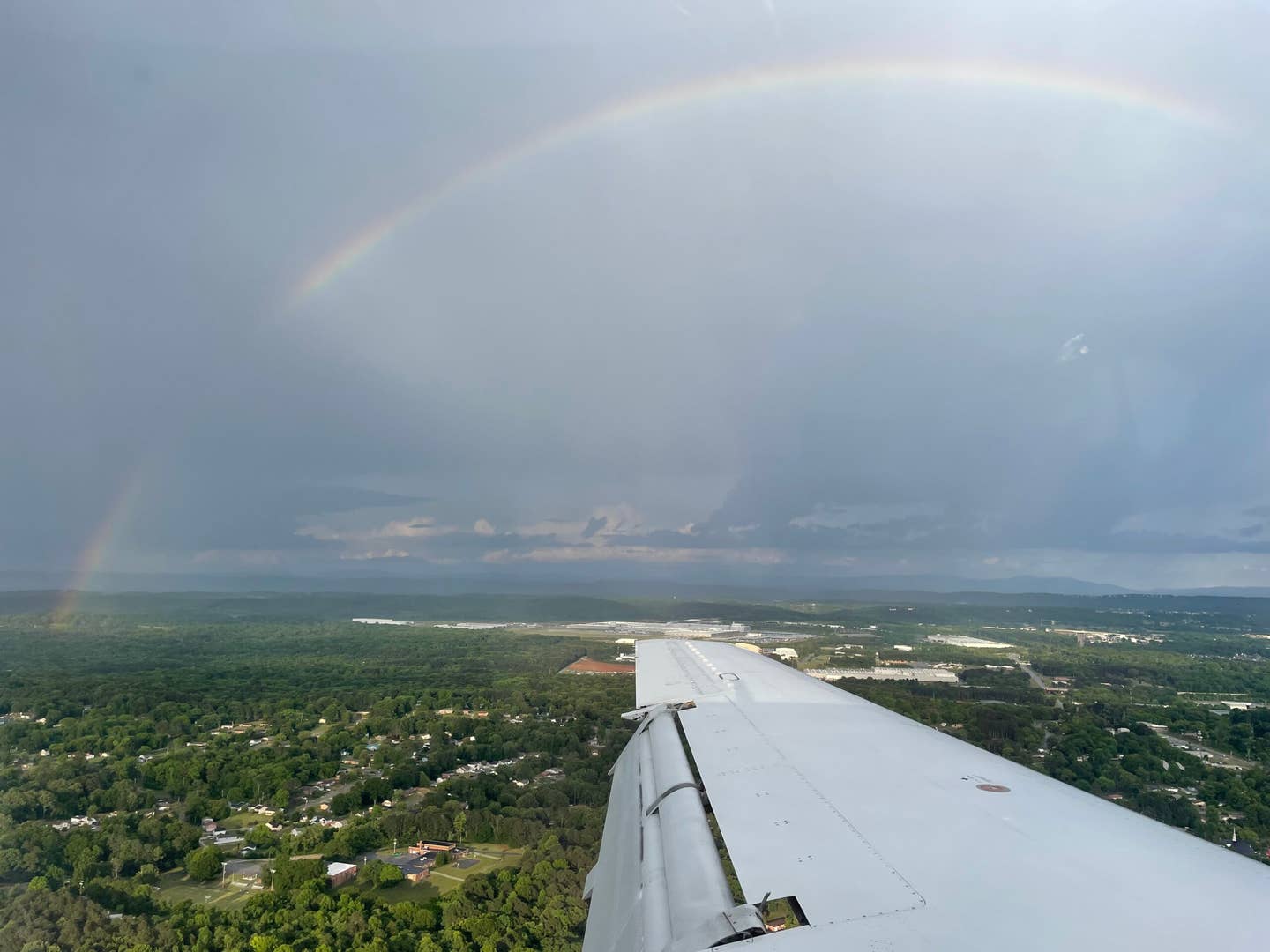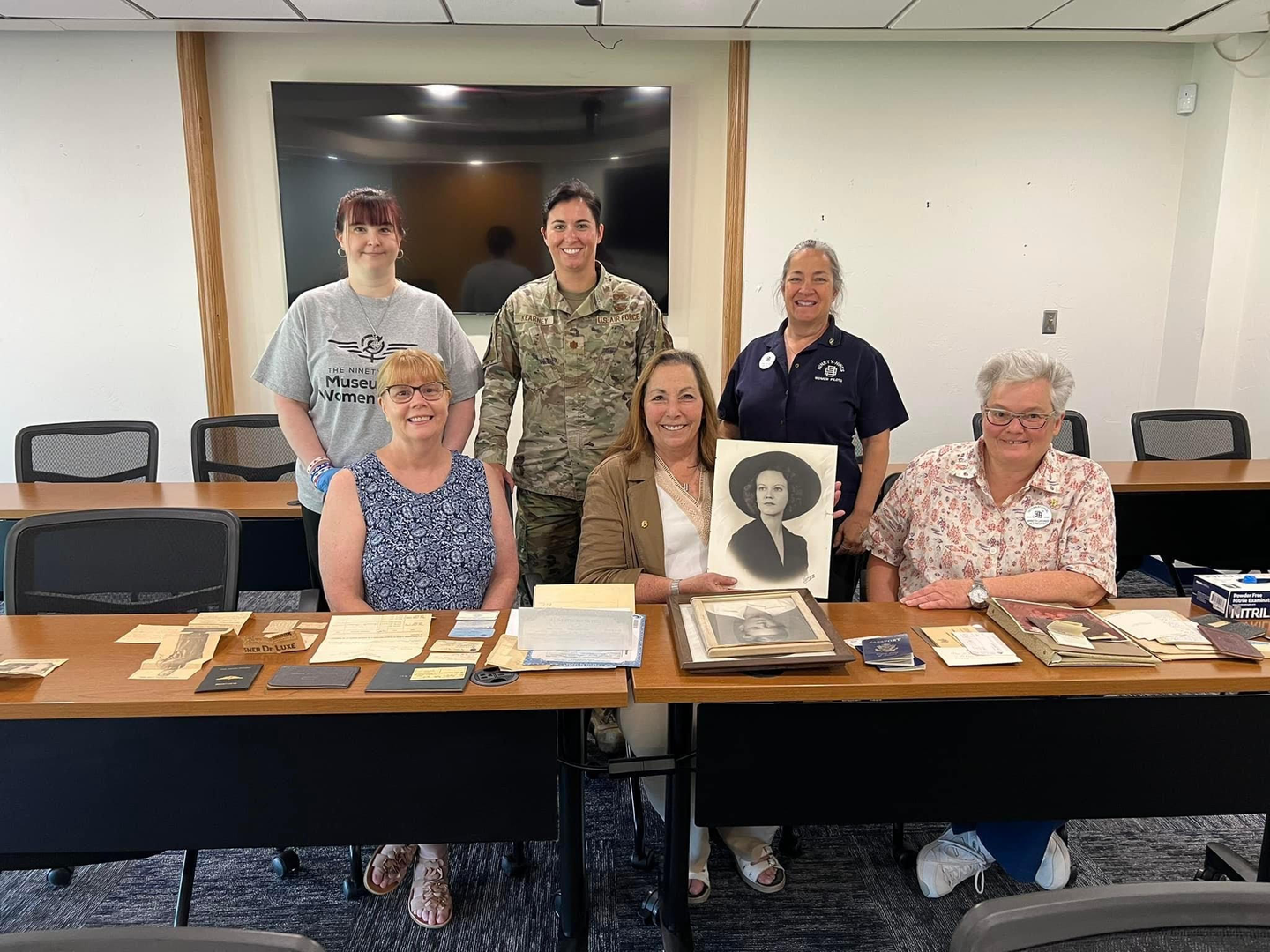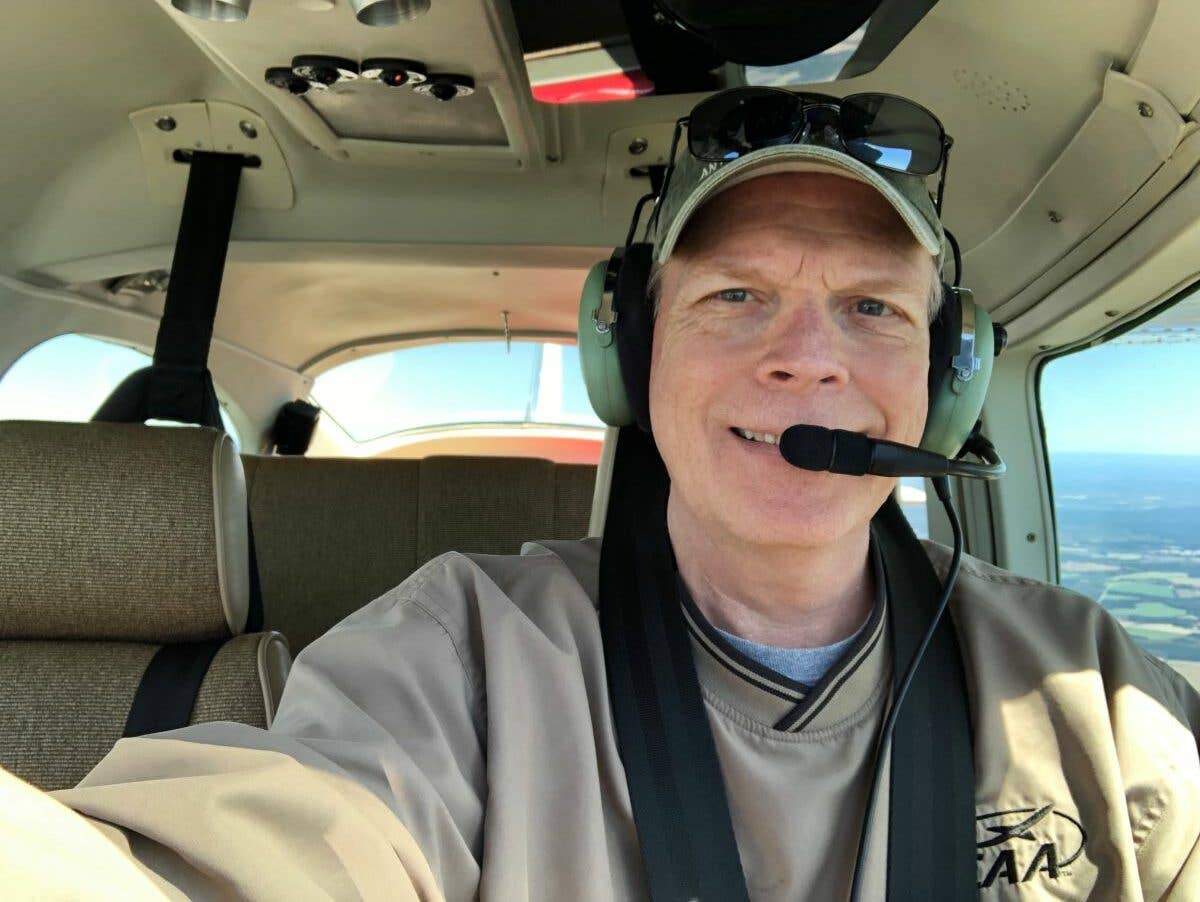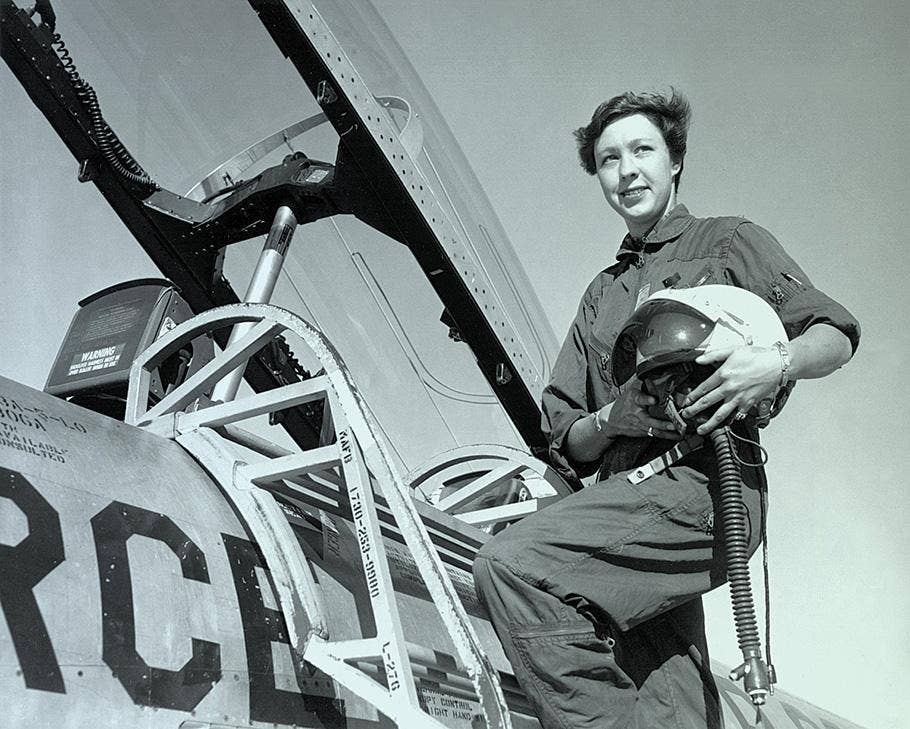What if There’s a Medical Emergency on an Airline Flight?
We take a look at risk mitigation from the pilot’s perspective.

You may have wondered what happens when there’s a medical emergency on a Part 121 flight—it’s not always a trigger for an immediate diversion and landing. [Photo: Julie Boatman]
So, what happens when there is an in-flight medical emergency on an airline flight?
It’s an interesting question that many of us have probably not thought much about before. But it happens, probably more frequently than we realize.
On a recent practical test I was giving, the applicant told me a story about being on an airline flight when a medical emergency occurred. The good news was he (and his wife) were both medical professionals, specifically emergency room (ER) nurses and offered their assistance when it was requested. In this particular case, there was also an ER doctor who also stepped forward to help.
This made me curious.
What exactly happens on an airline flight when there is a medical emergency? What additional risks does it impose on the crew, both cabin and flight, and specifically, what training does the crew get and procedures are they to follow if this happens?
Halfway Across the Gulf of Mexico?
In the particular story that was conveyed to me, the emergency took place on a flight from Cancun to Chicago. The flight had made it halfway across the Gulf of Mexico when the call for “Any medical professionals onboard?” came across the aircraft’s announcing system. The crew—and my applicant who offered his help—found themselves dealing with an unconscious passenger.
Most of us as passengers don’t think too much about what resources might be onboard an aircraft for the crew to use if a passenger is in need of medical assistance. No, every airplane doesn’t have a doctor on board, but some basic tools are there should this be needed. That fact, what is included in medical emergency packs, and the decision process that then ensues was really interesting to me and made me go digging further.
What Resources are Onboard?
There isn’t a full ambulance of equipment on board for the crew to save every passenger on every airline flight. But there is a medical kit. What is in that medical kit does vary a bit from airline to airline and to some degree to particular aircraft. But there are some general things that are commonly included, such as basic medications, and basic first aid materials, including bandage materials.
I kind of expected those things. What I didn’t expect to find was that there were more advanced medications that actually have to be dispensed by a medical professional.
Airlines have put things in their med kits that might be useful in saving a person’s life, that they don’t expect to ever be used by their cabin crew, and are there just in case there is an appropriately licensed and trained medical professional onboard who might properly put them to use.
In the case my practical test applicant conveyed to me, they had done this. Medications were dispensed under their medical license numbers (and only after they were provided and recorded) to aid in treating the patient.
“The goal is to do the best they can to stabilize someone and then get them to the ground where emergency medical services will meet the aircraft.”
What kind of medications might these be you might be thinking? They go well beyond basic aspirin and Tylenol, and include things that might be used to treat allergic reactions.
It is also pretty common to have some basic equipment that will include a stethoscope, blood pressure cuff, and a small supply of oxygen that can be applied via a mask. Most aircraft also have AEDs on board for use in the event of a heart attack. Many also carry an ancillary kit to be used if a communicable disease is suspected, a general grab-and-go kit used to contain or clean bodily fluids, in addition to general first aid kit items such as bandages and items to stop bleeding such as gauze.
OK, so there’s some stuff to help, but this obviously isn’t an emergency room where all the resources are there to save someone from any possible event. The goal is to do the best they can to stabilize someone and then get them to the ground where emergency medical services will meet the aircraft. So, divert to the nearest airport immediately, right?
Well, maybe, but not so quick.
To Divert or Not to Divert?
The question of whether the pilot will divert the flight is not as simple as it sounds. What if the airplane is over the Gulf of Mexico, or an ocean? What about if it is over a country in which the airline can’t land? Or what if the nearby airport is one at which the airline doesn’t have gates?
I know, lots of questions. That’s why the airlines have established procedures.
‘If’ the Aircraft Will Divert
Interestingly, the question of whether or not to divert is not one the captain, the first officer, or any of the cabin crew make.
During the emergency, the flight deck crew (pilot and FO) do not leave their stations. They contact an in-flight service through which they reach their airline operations center. This airline operations center then leverages the services and utilities they have in place to deal with, well, exactly a situation like this.
The decision to divert is then based on what the ground-based services decide from the details provided about the situation.
Ground Services to the Flight Deck
Airlines are prepared for situations like this. They have processes in place. Most airlines rely on a third-party service provider to make this decision on the ground with whom the flight crew can be in contact.
For most airlines, a pilot is able to contact a flight surgeon on the ground that can collect relayed information from the cabin crew, through the flight deck crew, to the ground to make decisions based on the patient’s condition. This is done via radio that might even be relayed to a phone call right from the flight deck.
Ground resources take relayed information from the cabin crew to a designated flight deck crew member who will relay the information to a flight surgeon who will evaluate that information. A decision is then made based on patient condition and risk for the flight as to whether a flight will divert.
A decision to divert or not is not based on a pilot’s ability to become a “doctor for the moment.” Certainly, if there happens to be a medical professional on board, the information that is relayed along to those ground services may improve in its quality and ability to accurately affect a final decision. The flight surgeon on the ground will make the final decision as to whether the aircraft will continue to its destination or divert to a nearest suitable airport.
Is It Always Up to the Decision from the Ground?
Well, not always.
There are typically a few things that are pretty much an automatic divert decision.
A passenger experiencing uncontrolled bleeding, actively in labor, in need of CPR, or to whom an AED has delivered a shock generally triggers an immediate diversion.
Most airlines and pilots consider these kinds of the “big four” things that don’t take much else for decision-making to evaluate. It’s time to divert and get that person to the nearest (suitable and safe) place for a landing where they can hand them over to emergency medical services.
What Training Do the Pilots Get?
Pilots are not trained medical professionals. I know that seems obvious when I say it, but they are also not asked to act as such.
They are asked to act within a crew environment and make decisions based on risk management principles. The training they get to deal with a medical emergency in the cabin (behind their closed and locked flight deck doors) is created with this in mind.
The first step in most airline procedure manuals is to split the flight crew. One flight deck crew member is going to deal with the emergency; the other is going to deal with the management of the aircraft and flying duties.
In the case of a reported passenger medical emergency, the cabin crew might notify the flight deck crew and find them responding in the following manner.
Either the first officer or the captain will be designated as the one responsible for the passenger's medical emergency while the other crew member manages the flight. The designated emergency managing crew member will contact those ground services we mentioned above while the other crew member flies the airplane and coordinates with ATC. This splits the crew, but it also removes the backup function of each crew member for each other as they continue the flight.
Once a decision has been made by the ground operations center as to whether a diversion will be conducted or not, the crew then works together to either proceed to the original destination or divert to another location.
Managing the Risk During the Emergency
Going back to the splitting of the crew: This increases the workload of both pilots. Crew is trained to manage such a situation to mitigate and minimize risks caused by the additional crew workload requirements.
Managing an in-flight passenger medical emergency is something that most pilots hope will never happen, but the reality is that there are lots of people flying in aircraft at any given time. The odds are that there will be at least some medical emergencies. And that’s why there is training on how to manage them, and how to manage the risks associated with managing the situations.
The Rest of the Story
Oh, so you probably want to know what happened to the passenger to whom my practical test applicant provided assistance, right? Well, the bad news is he died. But in this case, there was probably nothing onboard that could have helped, and an immediate diversion would not have helped the case, unfortunately.
I know, tragic.
But as I discussed these scenarios with other pilots, some of them related better experiences. In one case, a diversion that was executed likely helped a passenger get to medical services faster and probably generated a positive outcome when it might have not been so otherwise.
I have been on two flights when there were medical emergencies and the crew responded to provide additional assistance. Even if a flight is not diverted for a condition that seems more minor, just the ability to have medical services available upon landing and to get that passenger off first can expedite medical treatment. In many medical-related scenarios, time is a major factor in limiting damage or saving a life. If you happen to find yourself on one of these flights, sit tight in your seat and let the afflicted person get the services they need. Your carry-on bag will still be in the overhead, and you can get off after the situation is managed. I know you might miss your connecting flight, but if it was you, you would want those extra moments of time for a medical professional to provide potentially life-affecting, or saving, services.
And One More Thing…
A cold perspective, statement, point—honestly I am not sure what to call it—I heard clearly from pilots I talked with who work at multiple airlines: The passenger “never dies on the airplane.”
Huh?
From the perspective of most crew, the “afflicted passenger” is never dead (assuming that is the result) until they have been delivered to appropriate ground medical services. At that time a statement that the passenger may “appear to have deceased” can be made, but the pronouncement of death, by regulation, can only be made once the aircraft is on the ground. This has to do with the fact that the state or country in which the declaration of a death is made has jurisdiction over a body. Morbid, but an interesting side point hopefully most crew never need to deal with.
I hope you as a pilot, or passenger, never encounter a need for the processes or services that are in place for managing a passenger's medical emergency. The good news is that if you do, someone has thought this through to be able to make the best decisions possible to mitigate potential risks to the flight while balancing the needs of a particular emergency. Services are available. It isn’t just left to, pardon the pun, a wing, and a prayer to generate the best possible outcome.

Sign-up for newsletters & special offers!
Get the latest FLYING stories & special offers delivered directly to your inbox






